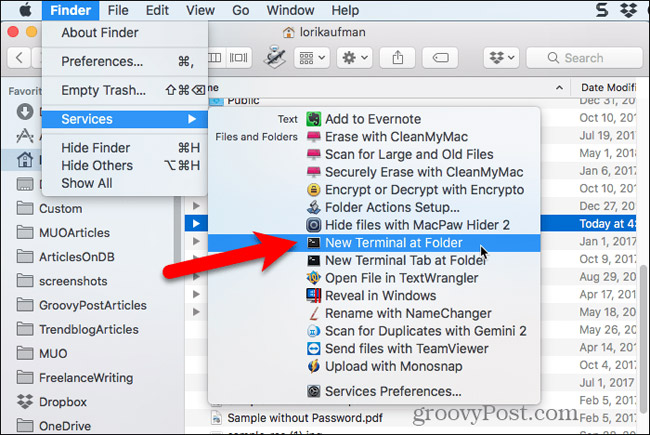
The locate command does require a properly built "locate" database, which Apple blocks by default in OS X however, you can enable the launch daemon that regularly builds and updates the locate database with the following command:
#How to create file in terminal mac full
In this command, NAME can be any partial file name and the command will output the full path to any item that includes this name. The first of these is the "locate" command, which will build a database of system resources and then allow you to find them by simply typing the following command: Since the find command walks through the filesystem hierarchy, it may take a long time to complete, and if you specify the root folder only (without using flags to prevent recursion), it may recurse through the /Volumes/Macintosh HD/ mount point directory repeatedly and never end the search.īeyond the find command are two that offer indexed search results.
#How to create file in terminal mac manual
The find command has a number of options you can use to narrow down search results, and these can be looked up on its manual page, but the basics for finding a file are to specify the starting path and the name, such as the example here to locate a file called "test.txt" starting in the Users directory: The find command will try to enter any folder in the specified path, which can result in "Permission denied" errors, but for files that your account has default access, this command should reveal them properly.

The first option in the Terminal is the classic "find" command that is common to many Unix systems, which will recursively walk a specified folder hierarchy and search items for a given name pattern. Of course besides Apple's GUI options there are some third-party searching tools available however, without these the other option in OS X is to use the Terminal, which can benefit both Terminal and GUI-based routines.
:max_bytes(150000):strip_icc()/how-to-save-terminal-commands-on-a-mac-51877871-904e2096e704422ab3fd353574322dc9.jpg)

However, there are other options for accessing this index and otherwise finding files you might be interested in locating. There several ways to find files in OS X, the most popular of which are GUI-based routines such as the Spotlight menu and the Finder search, both of which offer quick access to the system's metadata search index.


 0 kommentar(er)
0 kommentar(er)
